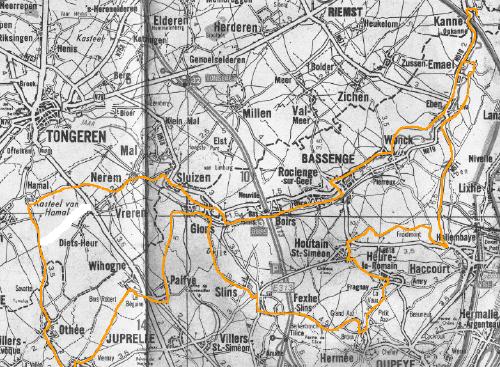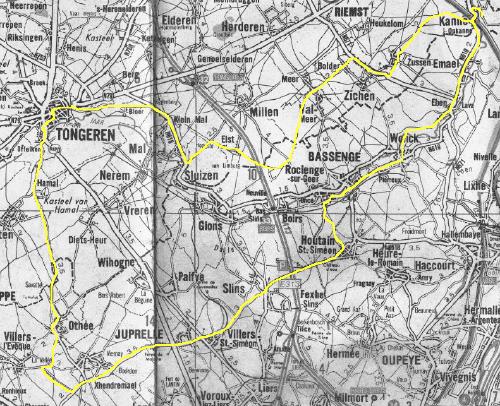Lately I’ve been doing a tiny bit of research in the use of commonplace books. There is a close resemblance between the function of commonplace books (in for instance the Seventeenth century) and how some people use blogs. Some bloggers see, or call their blogs commonplace books. It’s a pretty well-known comparision, but I never really explored it until now.
Here’s some quick info, with links, and links to some pictures:
http://en.wikipedia.org/wiki/Commonplace_book
http://www.library.yale.edu/beinecke/compb.htm
http://www.metafilter.com/mefi/46800
Here’s a danish blog that uses ‘commonplace book’ as a category — seems to have nice quotations… http://www.bookish.dk/index.php?cat=23. And a blog that calls itself a commonpace book: http://www.constantreader.org/v2/commonplace.html.
Some more relevant stuff:
http://www.futureofthebook.org/2005/08/the_blog_as_a_record_of_readin.html
http://cut-and-paste.de/
http://www.diyplanner.com/
There’s much more, but my dear reader, you can google as well as me.
In Making Things Public Anke te Heesen has a very nice short article about notebooks. I copied quite a few paragraphs from it; waht follows here is a digest of her article. I love the way she sees the notebook as a paper machine, as a technology that is an actor in how we write, store and process thoughts.
“The notebook as a paper-machine consists of the function noting and storing notes. ‘To note’ means first and foremost ‘to write down’, from the Latin notare, with the connotations sign, mark and writing, or from noscere, which means ‘to get to know’. ‘Note’, from notitia refers to this, namely, ‘to be known’. (…) Therefore apart from the actual act of wrigin, noting also describes a particular kind of perception: taking notice of something. Etymologically, here writing and taking notice are contained in one procedure, which at the same time implies habitual forming of a person and results in a praxis with paper that requires certain gestures, performed acts, rituals and tools.” p. 584
“From the sixteenth century on, bits of knowledge have been noted down in books with blank pages, stored in special boxes or placed in pigeonholes or compartments on bookshelves. In that era, the notes and small pieces of paper were the smallest material text-units of intellectual work. Organized note-taking was understood as a writing technique that could be learned, and it was one of the essential skills in the learned world.” p. 585
“Already in 1605, Francis Bacon recommends in Advancement of Learning the use of ‘commonplace books for entering the fruits of reading, quotations and references: ‘I hold that the diligence, and pains in collecting common Places, is of great use in certainty and studying.'” p. 586
“The philosopher John Locke, who influenced entire generations of English gentlemen with his instructions of how to make commonplace books, rendered the procedure methodical. In one of his texts, published in 1706, he described how to keep such a notebook. The ‘Memory is the treaurey or Storehouse,’ he said, but one must provide memory with an orderly basis. ‘It would be just for all the World as serviceable as a great deal of Household Stuff, when if we wanted any particular Thing we could not tell were to find it.’ This organization begins with reading. One should first read a book but not write anything in the notebook. ‘The places we design to extract from are to be marked on a piece of Paper, that we may do it after we have read the Book out.’ So after putting in all the bookmarks, one should read the book a second time and decide what is relevant enough to be written down in the notebook. ‘I take a White Paper Book and what Size I think fit. I divide the two first pages, which face another, by parallel lines,’ and make an index. In so doing, one froms one’s own keywords. A commonplace book thus refers a quotation noted down to its original context (its origin, the book) and, a the same time, is a stock to draw on for the memory, the speech to be given or the text to be written.” p. 586
“Entire generations of intellectuals and young gentlemen were educated to practice this technique. The notebook was a technique in service of discipline.” p. 587
“Notebooks were a place for collecting things, a technique for discipline, chronological recording and evidence. Such a book with its blank or gradually filling pages was a paper-machine which took in what one fed it but at the same time directed the entries.” p. 588
“From the beginning, this paper technology adhered to certain rules: The entries had to be written in a straight line , and no blots or spots should mar the paper. A margin, which in the earliest years was often signalized by a fold in the paper, provided space for notes and commentaries and played a significant role in administrative forms of writing (files).” p. 588
Anke te Heesen, ‘The Notebook, A Paper Technology’, in Latour & Weibel (eds.) Making Things Public. Atmospheres of Democracy, ZKM / MIT, Cambridge Ma, 2005, p. 582-589
So now on my desk:
John Locke, A New Method of a Common-Place Book: http://oll.libertyfund.org/Home3/HTML.php?recordID=0326.
Francis Bacon, The Advancement of Learning: http://darkwing.uoregon.edu/~rbear/adv1.htm.


